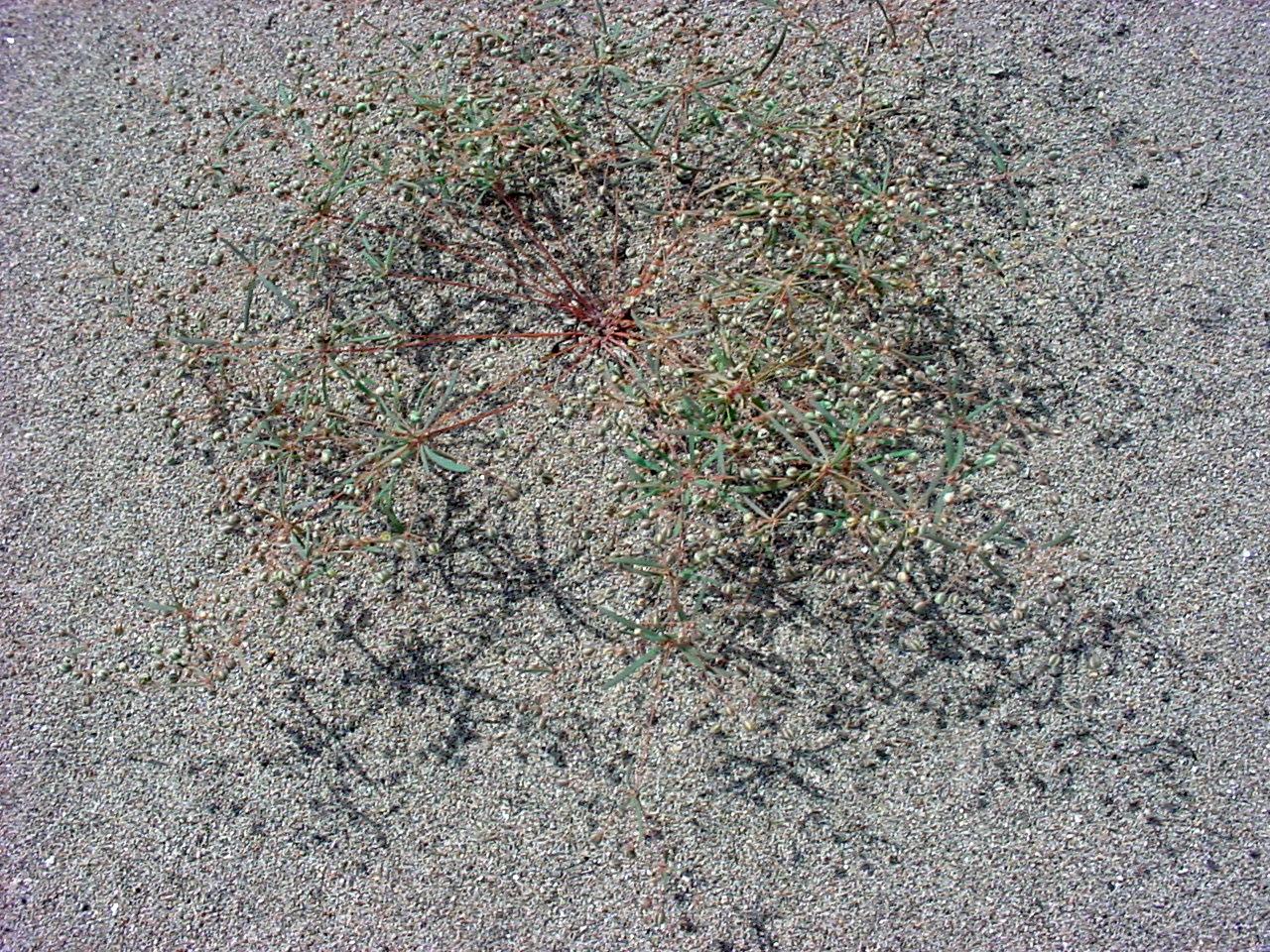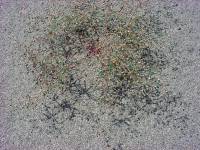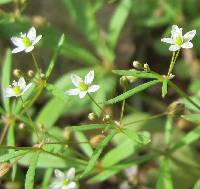Herbs, annual [perennial], glabrous. Stems prostrate to erect, branching from base. Leaves whorled, opposite, or alternate; basal leaves usually largest, cauline leaves gradually reduced distally; stipules absent or rudimentary. Inflorescences axillary or terminal, reduced umbellate or cymose. Flowers pedicellate; sepals persistent, 5, distinct, not stellate-pubescent; petals absent; stamens 3-5, alternate with the sepals or carpels, basally connate by a small hypogynous ring; pistils 3-5-locular; ovules 5-15 per locule; styles 3-5, distinct. Fruits capsular, 3-valved. Seeds: flattened laterally, reniform, smooth or reticulate to ribbed, strophioles absent. x = 9.
Although Mollugo has little economic value, some species have been used medicinally or as vegetables. Mollugo spergula, which has been used in India as a green vegetable, contains bitter triterpenoid saponins and sometimes is used as a source of antiseptics (A. K. Barua et al. 1989) and has been used also as a potherb (A. K. Tripathi 1988). Antifungal compounds have been isolated from Mollugo pentaphylla (M. Hamburger et al. 1989).
The taxonomy of species of Mollugo is in great disarray, and the genus is in need of a thorough worldwide revision.
C. F. Reed (1964), in a study of ore-pile flora, listed Mollugo gracillima Andersson and M. nudicaulis Lamarck from Maryland. The former was based on a misidentified specimen of M. verticillata, while the latter was correctly identified, representing the only known report of the species in North America.
PLANTS: Annual herbs (subshrubs), glabrous, sometimes glaucous.
STEMS: one to several from base, prostrate to ascending or erect.
LEAVES: whorled, unequal, short-petiolate to subsessile, exstipulate, the margins entire, the blade linear or lanceolate to oblanceolate or obovate, the base cuneate.
FLOWERS: l-several, pedicellate; sepals 5, scarious-margined, the midrib not extending to the apex; stamens 3-5 (10); pistils mostly 3-carpellate, the styles short or stigmas subsessile.
FRUITS: capsules, shorter or longer than the sepals.
SEEDS: numerous, reniform to rounded, detaching from the funiculus, without aril or filiform appendage. x = 9. -ca. 35 spp.; cosmopolitan, some weedy. (probably from the Latin: mollis = soft).
REFERENCES: Christy, Charlotte M. 1998. Molluginaceae. J. Ariz. - Nev. Acad. Sci. 30(2): 112..
Fls perfect; sep 5, distinct; stamens 3-10; ovary superior, 3-5-locular; styles 3-5; ovules many; fr a thin-walled loculicidal capsule; seeds without an aril; herbs with opposite or whorled lvs and pedicellate, axillary, white or greenish fls. 20, warm reg.
Gleason, Henry A. & Cronquist, Arthur J. 1991. Manual of vascular plants of northeastern United States and adjacent Canada. lxxv + 910 pp.
©The New York Botanical Garden. All rights reserved. Used by permission.





